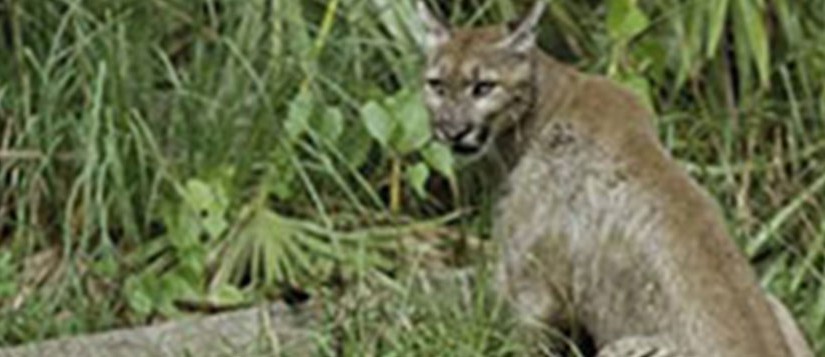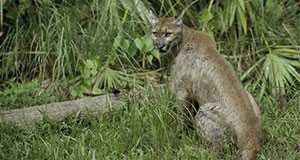 Panthers help maintain populations of some native species and control nuisance species such as wild hogs. They are generally secretive and rarely bother people, but there are rare situations where panthers can become dangerous or damaging. In this 4-page fact sheet, we present some facts about panthers, describe dangers and problems they may cause, and provide suggestions on how to cope with these issues. Written by William M. Giuliano, Holly K. Ober, Lauren Watine, Raoul Boughton, Eric Hellgren, Darrell Land, and Mark Lotz, and published by the UF Department of Wildlife Ecology and Conservation, December 2014.
Panthers help maintain populations of some native species and control nuisance species such as wild hogs. They are generally secretive and rarely bother people, but there are rare situations where panthers can become dangerous or damaging. In this 4-page fact sheet, we present some facts about panthers, describe dangers and problems they may cause, and provide suggestions on how to cope with these issues. Written by William M. Giuliano, Holly K. Ober, Lauren Watine, Raoul Boughton, Eric Hellgren, Darrell Land, and Mark Lotz, and published by the UF Department of Wildlife Ecology and Conservation, December 2014.
http://edis.ifas.ufl.edu/uw399
Tag: Wildlife Ecology and Conservation Department
Managing Conflicts with Wildlife: Living with Wild Hogs
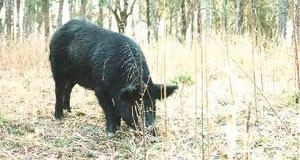 Wild hogs are a popular species, pursued and hunted by many throughout Florida. They are also an important food source for the endangered Florida panther.
Wild hogs are a popular species, pursued and hunted by many throughout Florida. They are also an important food source for the endangered Florida panther.
But there are situations where they can become dangerous or damaging. In this 4-page fact sheet, we present some facts about hogs, describe dangers and problems they may cause, and provide suggestions on how to cope with these issues. Written by William M. Giuliano, Holly K. Ober, Lauren Watine, Raoul Boughton, and Don Coyner, and published by the UF Department of Wildlife Ecology and Conservation, December 2014. (Photo: M.S. Smith)
http://edis.ifas.ufl.edu/uw400
Managing Conflicts with Wildlife: Living with Bears
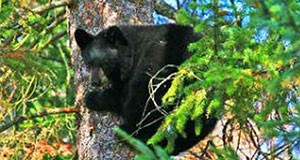 Black bears are omnivorous, enigmatic animals that help maintain healthy forests by dispersing seeds of plants they eat. Bear watching is a favorite pastime for many Floridians throughout the state. Bears are generally secretive and rarely a problem for people. But there are rare situations where they can become dangerous or damaging. In this 4-page fact sheet, we present some facts about bears, describe dangers and problems they may cause, and provide suggestions on how to cope with these issues. Written by William M. Giuliano, Holly K. Ober, Lauren Watine, Eric Hellgren, Raoul Boughton, and Dave Telesco, and published by the UF Department of Wildlife Ecology and Conservation, December 2014.
Black bears are omnivorous, enigmatic animals that help maintain healthy forests by dispersing seeds of plants they eat. Bear watching is a favorite pastime for many Floridians throughout the state. Bears are generally secretive and rarely a problem for people. But there are rare situations where they can become dangerous or damaging. In this 4-page fact sheet, we present some facts about bears, describe dangers and problems they may cause, and provide suggestions on how to cope with these issues. Written by William M. Giuliano, Holly K. Ober, Lauren Watine, Eric Hellgren, Raoul Boughton, and Dave Telesco, and published by the UF Department of Wildlife Ecology and Conservation, December 2014.
http://edis.ifas.ufl.edu/uw396
Managing Conflicts with Wildlife: Living with Alligators
 American alligators are found in only 10 states in the southeastern U.S. In most situations alligators do not harm people, but they can pose potential dangers to people in some situations. In this 3-page fact sheet, we present some facts about alligators, describe their potential threats to people and pets, and provide suggestions on how to cope with these risks. Written by Holly K. Ober, Harry J. Dutton, Allan R. Woodward, Lindsay J. Hord, and William M. Giuliano, and published by the UF Department of Wildlife Ecology and Conservation, November 2014.
American alligators are found in only 10 states in the southeastern U.S. In most situations alligators do not harm people, but they can pose potential dangers to people in some situations. In this 3-page fact sheet, we present some facts about alligators, describe their potential threats to people and pets, and provide suggestions on how to cope with these risks. Written by Holly K. Ober, Harry J. Dutton, Allan R. Woodward, Lindsay J. Hord, and William M. Giuliano, and published by the UF Department of Wildlife Ecology and Conservation, November 2014.
http://edis.ifas.ufl.edu/uw393
Managing Conflicts with Wildlife: Living with Frogs
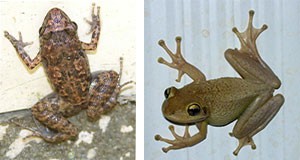 Frogs control garden pests such as insects and slugs and serve as a food source for many larger wildlife species. Research on the substances frogs secrete through their skins has even led to the creation of new painkillers and antibiotics. Most frogs in Florida are reclusive and harmless to people, but two species of frogs that have invaded Florida can be harmful to humans and their pets. This 4-page fact sheet presents some facts about native frogs, describes the problems invasive frogs cause, and provides suggestions on how to cope with problem frogs. Written by Steve Johnson, Holly K. Ober, and William M. Giuliano, and published by the UF Department of Wildlife Ecology and Conservation, November 2014. (Photos: Steve Johnson, UF/IFAS)
Frogs control garden pests such as insects and slugs and serve as a food source for many larger wildlife species. Research on the substances frogs secrete through their skins has even led to the creation of new painkillers and antibiotics. Most frogs in Florida are reclusive and harmless to people, but two species of frogs that have invaded Florida can be harmful to humans and their pets. This 4-page fact sheet presents some facts about native frogs, describes the problems invasive frogs cause, and provides suggestions on how to cope with problem frogs. Written by Steve Johnson, Holly K. Ober, and William M. Giuliano, and published by the UF Department of Wildlife Ecology and Conservation, November 2014. (Photos: Steve Johnson, UF/IFAS)
http://edis.ifas.ufl.edu/uw394
The Florida Panther: Past, Present, and Future
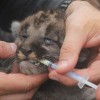 Florida panther was presumed extinct by the early 1950s, but were rediscovered in 1973 by a survey team organized by the National Geographic Society. They were one of the first species to be added to the US endangered species list and are now the only population of North American puma that occurs east of Mississippi River. This 3-page fact sheet describes Florida panther research and management actions, the effects they have had on the population, and continuing challenges. Written by Madelon van de Kerk, David P. Onorato, and Madan K. Oli, and published by the UF Department of Wildlife Ecology and Conservation, February 2015.
Florida panther was presumed extinct by the early 1950s, but were rediscovered in 1973 by a survey team organized by the National Geographic Society. They were one of the first species to be added to the US endangered species list and are now the only population of North American puma that occurs east of Mississippi River. This 3-page fact sheet describes Florida panther research and management actions, the effects they have had on the population, and continuing challenges. Written by Madelon van de Kerk, David P. Onorato, and Madan K. Oli, and published by the UF Department of Wildlife Ecology and Conservation, February 2015.
http://edis.ifas.ufl.edu/uw402
Habitat Requirements of the Florida Panther
 The Florida panther (Puma concolor coryi) was listed as endangered under the Endangered Species Act in 1967. Habitat loss and fragmentation are primary threats, driven by urban development and the conversion of rangelands to row crops, citrus production, and mining. This 3-page fact sheet focuses on which habitats are most important for conservation of the Florida panther. Written by Elizabeth F. Pienaar and Elena C. Rubino, and published by the UF Department of Wildlife Ecology and Conservation, October 2014. (Photo courtesy of the Florida Fish and Wildlife Conservation Commission.)
The Florida panther (Puma concolor coryi) was listed as endangered under the Endangered Species Act in 1967. Habitat loss and fragmentation are primary threats, driven by urban development and the conversion of rangelands to row crops, citrus production, and mining. This 3-page fact sheet focuses on which habitats are most important for conservation of the Florida panther. Written by Elizabeth F. Pienaar and Elena C. Rubino, and published by the UF Department of Wildlife Ecology and Conservation, October 2014. (Photo courtesy of the Florida Fish and Wildlife Conservation Commission.)
http://edis.ifas.ufl.edu/uw390
The Invasion Curve: A Tool for Understanding Invasive Species Management in South Florida
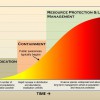 South Florida has more than its share of invasive plants, reptiles, amphibians, fish, mammals, birds, and invertebrates. Nonnative species often spread quickly. Research and monitoring can help managers anticipate which species will cause harm before it is too late to remove them. Identifying where a species is on the invasion curve is the first step to taking management action. The invasion curve shows that eradication of an invasive species becomes less likely and control costs increase as an invasive species spreads over time. Prevention is the most cost-effective solution, followed by eradication. If a species is not detected and removed early, intense and long-term control efforts will be unavoidable. This 4-page fact sheet was written by Rebecca G. Harvey and Frank J. Mazzotti, and published by the UF Department of Wildlife Ecology and Conservation, November 2014.
South Florida has more than its share of invasive plants, reptiles, amphibians, fish, mammals, birds, and invertebrates. Nonnative species often spread quickly. Research and monitoring can help managers anticipate which species will cause harm before it is too late to remove them. Identifying where a species is on the invasion curve is the first step to taking management action. The invasion curve shows that eradication of an invasive species becomes less likely and control costs increase as an invasive species spreads over time. Prevention is the most cost-effective solution, followed by eradication. If a species is not detected and removed early, intense and long-term control efforts will be unavoidable. This 4-page fact sheet was written by Rebecca G. Harvey and Frank J. Mazzotti, and published by the UF Department of Wildlife Ecology and Conservation, November 2014.
http://edis.ifas.ufl.edu/uw392
Conflicts between People and the Florida Black Bear
 An adult black bear may eat up to the equivalent calorie content of 38 Big Mac sandwiches a day, and can smell food from one to two miles away. Garbage is the main attractant, but bears are also attracted by bee hives, pet food, barbeque grills, fruit trees, and bird (or wildlife) feeders. Conflicts between people and black bears arise when people fail to remove or secure potential food sources. In their search for food, black bears may damage property and threaten, injure, or kill pets and livestock in order to gain access to their feed. This 5-page fact sheet provides tips for preventing human-bear conflicts and tells how to report conflicts if they happen. Written by Elizabeth F. Pienaar, and published by the UF Department of Wildlife Ecology and Conservation, September 2014.
An adult black bear may eat up to the equivalent calorie content of 38 Big Mac sandwiches a day, and can smell food from one to two miles away. Garbage is the main attractant, but bears are also attracted by bee hives, pet food, barbeque grills, fruit trees, and bird (or wildlife) feeders. Conflicts between people and black bears arise when people fail to remove or secure potential food sources. In their search for food, black bears may damage property and threaten, injure, or kill pets and livestock in order to gain access to their feed. This 5-page fact sheet provides tips for preventing human-bear conflicts and tells how to report conflicts if they happen. Written by Elizabeth F. Pienaar, and published by the UF Department of Wildlife Ecology and Conservation, September 2014.
http://edis.ifas.ufl.edu/uw389
Facts about Wildlife Diseases: Pseudorabies
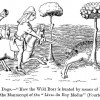 Pseudorabies primarily affects swine, but cattle, sheep and other mammals are susceptible to infection. Humans are not at risk. The superficial symptoms of this viral disease resemble rabies symptoms, thus the name pseudorabies. Although eliminated in commercial animals, feral swine populations in the United States continue to circulate the disease and provide a reservoir for outbreaks. Texas, Oklahoma, Florida, and Hawaii all have dense populations of feral swine with a high prevalence of pseudorabies. Feral swine, therefore, pose a serious risk to commercial swine operations, livestock, companion animals, and wildlife. This 4-page fact sheet was written by Samantha Wisely, and published by the UF Department of Wildlife Ecology and Conservation, August 2014.
Pseudorabies primarily affects swine, but cattle, sheep and other mammals are susceptible to infection. Humans are not at risk. The superficial symptoms of this viral disease resemble rabies symptoms, thus the name pseudorabies. Although eliminated in commercial animals, feral swine populations in the United States continue to circulate the disease and provide a reservoir for outbreaks. Texas, Oklahoma, Florida, and Hawaii all have dense populations of feral swine with a high prevalence of pseudorabies. Feral swine, therefore, pose a serious risk to commercial swine operations, livestock, companion animals, and wildlife. This 4-page fact sheet was written by Samantha Wisely, and published by the UF Department of Wildlife Ecology and Conservation, August 2014.
http://edis.ifas.ufl.edu/uw388
Alligator Abundance and Hydrology (2003–2013): What Long-term Monitoring Can Tell Us about Everglades Restoration
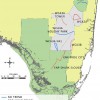 The American alligator is a powerful indicator for Everglades restoration. It responds clearly to environmental change and is easy and inexpensive to monitor. As top predators and ecological “engineers,” alligators affect nearly all aquatic life in the ecosystem. Thus, trends in alligator populations can tell us whether restoration projects are successful. Alligators may be monitored for both short-term responses (body condition) and longer-term responses to ecosystem change (abundance). This 3-page fact sheet discusses trends in alligator abundance. It was written by Rebecca G. Harvey, Jeff Beauchamp, Robin Bijlani, Frank J. Mazzotti, and Laura A. Brandt, and published by the UF Department of Wildlife Ecology and Conservation, July 2014.
The American alligator is a powerful indicator for Everglades restoration. It responds clearly to environmental change and is easy and inexpensive to monitor. As top predators and ecological “engineers,” alligators affect nearly all aquatic life in the ecosystem. Thus, trends in alligator populations can tell us whether restoration projects are successful. Alligators may be monitored for both short-term responses (body condition) and longer-term responses to ecosystem change (abundance). This 3-page fact sheet discusses trends in alligator abundance. It was written by Rebecca G. Harvey, Jeff Beauchamp, Robin Bijlani, Frank J. Mazzotti, and Laura A. Brandt, and published by the UF Department of Wildlife Ecology and Conservation, July 2014.
http://edis.ifas.ufl.edu/uw387
Valuing the Recreation Uses of Natural Resources: The Travel Cost Method
 Many available statistics provide evidence that outdoor recreation in Florida generates economic value, but these data do not capture the full recreation value of Florida’s natural resources. The Travel Cost Method (TCM) approach may be applied in cost-benefit analysis and in natural resource damage assessments where recreation values are relevant. This 8-page fact sheet summarizes and synthesizes economic texts on TCM and provides an overview of a case study in which the TCM was used to estimate the nature-based recreation use value of the Apalachicola River Region in Florida. Written by Elizabeth F. Pienaar, and published by the UF Department of Wildlife Ecology and Conservation, January 2014.
Many available statistics provide evidence that outdoor recreation in Florida generates economic value, but these data do not capture the full recreation value of Florida’s natural resources. The Travel Cost Method (TCM) approach may be applied in cost-benefit analysis and in natural resource damage assessments where recreation values are relevant. This 8-page fact sheet summarizes and synthesizes economic texts on TCM and provides an overview of a case study in which the TCM was used to estimate the nature-based recreation use value of the Apalachicola River Region in Florida. Written by Elizabeth F. Pienaar, and published by the UF Department of Wildlife Ecology and Conservation, January 2014.
http://edis.ifas.ufl.edu/uw386
Native Plants That Benefit Native Wildlife in the Florida Panhandle
 The key to enhancing wildlife (and attracting it to your property) is to provide the resources wildlife need. This means supplying food, water, and cover within the space you own and manage. Because the needs of each wildlife species for food and cover vary from one season to the next, a mix of plant species is required to meet the needs of a species all year round. And because each species has different needs, attracting and maintaining a wide variety of wildlife year round requires a wide diversity of plants. A property owner interested in attracting wildlife should nurture a wide variety of native plants to ensure that there is a large assortment of food and cover options available all the time. This 8-page fact sheet was written by Holly K. Ober and Gary W. Knox, and published by the UF Department of Wildlife Ecology and Conservation, October 2013.
The key to enhancing wildlife (and attracting it to your property) is to provide the resources wildlife need. This means supplying food, water, and cover within the space you own and manage. Because the needs of each wildlife species for food and cover vary from one season to the next, a mix of plant species is required to meet the needs of a species all year round. And because each species has different needs, attracting and maintaining a wide variety of wildlife year round requires a wide diversity of plants. A property owner interested in attracting wildlife should nurture a wide variety of native plants to ensure that there is a large assortment of food and cover options available all the time. This 8-page fact sheet was written by Holly K. Ober and Gary W. Knox, and published by the UF Department of Wildlife Ecology and Conservation, October 2013.
http://edis.ifas.ufl.edu/uw384
Measuring the Economic Value of the Environment and Natural Resources
 Conservation of natural resources requires investments of money, time, and effort by the government, businesses, landowners, conservation organizations, and the general public. Policies to conserve and manage natural resources should be based on a careful accounting of both the benefits and costs of conserving these resources. In a prior EDIS document, cost-benefit analysis and the role it plays in natural resources management and policy was discussed. This document extends that previous discussion by presenting more detailed information about how economists categorize the benefits of natural resources. This 4-page fact sheet was written by Elizabeth Pienaar, and published by the UF Department of Wildlife Ecology and Conservation, December 2014.
Conservation of natural resources requires investments of money, time, and effort by the government, businesses, landowners, conservation organizations, and the general public. Policies to conserve and manage natural resources should be based on a careful accounting of both the benefits and costs of conserving these resources. In a prior EDIS document, cost-benefit analysis and the role it plays in natural resources management and policy was discussed. This document extends that previous discussion by presenting more detailed information about how economists categorize the benefits of natural resources. This 4-page fact sheet was written by Elizabeth Pienaar, and published by the UF Department of Wildlife Ecology and Conservation, December 2014.
http://edis.ifas.ufl.edu/uw385
Necropsies of Reptiles: Recommendations and Techniques for Examining Invasive Species
 Captures and postmortem examinations, or necropsies, of invasive or nonnative animals may provide insight into the ecological impact of these invaders. Researchers should be able to perform necropsies when an opportunity arises to examine nonnative species for study. While the techniques described serve as a guide to necropsy of all reptiles, we focus on exotic species found in south Florida. South Florida provides prime habitat for invasive reptiles such as Argentine black and white tegu and Burmese python, and these species are used to describe our techniques. This 26-page fact sheet was written by Seth C. Farris, Michiko A. Squires, Frank Ridgley, Emma Lavergne, Mitchell Serota, and Frank J. Mazzotti, and published by the UF Department of Wildlife Ecology and Conservation, September 2013.
Captures and postmortem examinations, or necropsies, of invasive or nonnative animals may provide insight into the ecological impact of these invaders. Researchers should be able to perform necropsies when an opportunity arises to examine nonnative species for study. While the techniques described serve as a guide to necropsy of all reptiles, we focus on exotic species found in south Florida. South Florida provides prime habitat for invasive reptiles such as Argentine black and white tegu and Burmese python, and these species are used to describe our techniques. This 26-page fact sheet was written by Seth C. Farris, Michiko A. Squires, Frank Ridgley, Emma Lavergne, Mitchell Serota, and Frank J. Mazzotti, and published by the UF Department of Wildlife Ecology and Conservation, September 2013.
http://edis.ifas.ufl.edu/uw382
The Use of Cost-Benefit Analysis in Environmental Policy
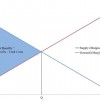 When analyzing environmental problems, economists consider both the benefits and costs of actions. If benefits exceed costs then economic theory supports that action. For example, if the total benefits of conserving land exceed the costs then cost-benefit analysis would support conservation of the land. However, great care must be taken to accurately identify and quantify benefits and costs to determine whether an action is cost-benefit justified. Stakeholders may have an incentive to overstate costs or benefits, in order to influence decision-making. This 5-page fact sheet was written by Elizabeth F. Pienaar, and published by the UF Department of Wildlife Ecology and Conservation, September 2013.
When analyzing environmental problems, economists consider both the benefits and costs of actions. If benefits exceed costs then economic theory supports that action. For example, if the total benefits of conserving land exceed the costs then cost-benefit analysis would support conservation of the land. However, great care must be taken to accurately identify and quantify benefits and costs to determine whether an action is cost-benefit justified. Stakeholders may have an incentive to overstate costs or benefits, in order to influence decision-making. This 5-page fact sheet was written by Elizabeth F. Pienaar, and published by the UF Department of Wildlife Ecology and Conservation, September 2013.
http://edis.ifas.ufl.edu/uw383
Native and Nonnative Crocodilians of Florida
 Florida has two native species of crocodilians, the American alligator and the American crocodile. These federally protected species are easily confused with nonnative crocodilians found in south Florida, such as the spectacled caiman and the Nile crocodile. Some key features used to distinguish these animals are the shape of the head, the shape of the snout, and the pattern of nuchal scutes (bony plates in between head and shoulders). It is important to report all nonnative crocodilians so that researchers may quickly remove them in order to protect Florida’s native ecosystems. This 2-page fact sheet was written by Michiko A. Squires, Seth C. Farris, Brian M. Jeffery, and Frank J. Mazzotti, and published by the UF Department of Wildlife Ecology and Conservation, September 2013.
Florida has two native species of crocodilians, the American alligator and the American crocodile. These federally protected species are easily confused with nonnative crocodilians found in south Florida, such as the spectacled caiman and the Nile crocodile. Some key features used to distinguish these animals are the shape of the head, the shape of the snout, and the pattern of nuchal scutes (bony plates in between head and shoulders). It is important to report all nonnative crocodilians so that researchers may quickly remove them in order to protect Florida’s native ecosystems. This 2-page fact sheet was written by Michiko A. Squires, Seth C. Farris, Brian M. Jeffery, and Frank J. Mazzotti, and published by the UF Department of Wildlife Ecology and Conservation, September 2013.
http://edis.ifas.ufl.edu/uw380
Conserving Urban Wildlife in the Face of Climate Change
 Virtually all climatologists agree that humans are increasing the rate of the Earth’s warming by releasing greenhouse gases into the atmosphere. But you might be surprised to learn that houses and residential neighborhoods are sources greenhouse gases of carbon because everything in a house that runs on electricity or gas is often derived from burning fossil fuels. This 4-page fact sheet describes the connections between climate change, wildlife, and human neighborhoods and presents several ways for residents to live more sustainably. Written by Daniel Feinberg and Mark Hostetler, and published by the UF Department of Wildlife Ecology and Conservation, September 2013.
Virtually all climatologists agree that humans are increasing the rate of the Earth’s warming by releasing greenhouse gases into the atmosphere. But you might be surprised to learn that houses and residential neighborhoods are sources greenhouse gases of carbon because everything in a house that runs on electricity or gas is often derived from burning fossil fuels. This 4-page fact sheet describes the connections between climate change, wildlife, and human neighborhoods and presents several ways for residents to live more sustainably. Written by Daniel Feinberg and Mark Hostetler, and published by the UF Department of Wildlife Ecology and Conservation, September 2013.
http://edis.ifas.ufl.edu/uw381
Conservation Subdivision: Post-construction Phase–Engaging Residents (WEC334/UW379)
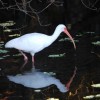 As urban communities grow, design and management strategies for new developments become critical factors that determine impacts on natural resources. How can we accommodate growth yet conserve natural resources, such as biodiversity, water, and energy? In this document, we focus on conserving biodiversity when land is subdivided, constructed, and occupied. This 6-page fact sheet was written by Daniel Feinberg and Mark Hostetler, and published by the UF Department of Wildlife Ecology and Conservation, June 2013.
As urban communities grow, design and management strategies for new developments become critical factors that determine impacts on natural resources. How can we accommodate growth yet conserve natural resources, such as biodiversity, water, and energy? In this document, we focus on conserving biodiversity when land is subdivided, constructed, and occupied. This 6-page fact sheet was written by Daniel Feinberg and Mark Hostetler, and published by the UF Department of Wildlife Ecology and Conservation, June 2013.
http://edis.ifas.ufl.edu/uw379
Tips for Integrating Land and Wildlife Management: Deer in Ranchlands (WEC330/UW375)
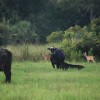 In addition to having generally low-quality foods, ranchlands often have a low diversity of food sources, further reducing the quality of habitat for deer. Ranchland management for deer should therefore focus on providing a diversity of abundant, high-quality foods. This 2-page fact sheet provides some deer habitat improvement tips that focus primarily on raising the quality of deer forage but that also will help you grow better cover by improving plant diversity and productivity. Written by William M. Giuliano, John M. Olson, and Cailey Thomas, and published by the UF Department of Wildlife Ecology and Conservation, January 2013.
In addition to having generally low-quality foods, ranchlands often have a low diversity of food sources, further reducing the quality of habitat for deer. Ranchland management for deer should therefore focus on providing a diversity of abundant, high-quality foods. This 2-page fact sheet provides some deer habitat improvement tips that focus primarily on raising the quality of deer forage but that also will help you grow better cover by improving plant diversity and productivity. Written by William M. Giuliano, John M. Olson, and Cailey Thomas, and published by the UF Department of Wildlife Ecology and Conservation, January 2013.
http://edis.ifas.ufl.edu/uw375
